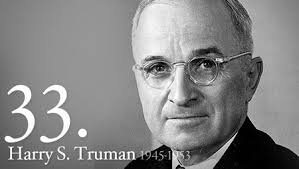Common hot dog sausage ingredients include:
- Meat trimmings and fat, e.g. mechanically separated meat, pink slime, meat slurry
- Flavorings, such as salt, garlic, and paprika
- Preservatives (cure) – typically sodium erythorbate and sodium nitrite
Pork and beef are the traditional meats used in hot dogs. Less expensive hot dogs are often made from chicken or turkey, using low-cost mechanically separated poultry. Changes in meat technology and dietary preferences have led manufacturers to lower the salt content and use turkey, chicken, and vegetarian meat substitutes.
Commercial preparation
Hot dogs are prepared commercially by mixing the ingredients (meats, spices, binders and fillers) in vats where rapidly moving blades grind and mix the ingredients in the same operation. This mixture is forced through tubes into casings for cooking. Most hot dogs sold in the US are "skinless" rather than "natural casing" sausages.
Although hot dogs are cooked during manufacture, it is still recommended that they are heated to an internal temperature of at least 165 °F prior to consumption.
Most hot dogs are high in fat and salt and have preservatives sodium nitrate and sodium nitrite, which are contributors to nitrate-containing chemicals classified as group 1 carcinogens by the World Health Organization, although this has been disputed. These health concerns have resulted in manufacturers offering alternative product lines made from turkey and chicken, and uncured, low-sodium, and "all-natural" franks. Hot dogs have relatively low carcinogenic heterocyclic amine (HCA) levels compared to other types of ready-to-eat meat products because they are manufactured at low temperatures.
An American Institute for Cancer Research (AICR) report found that consuming one daily 50-gram serving of processed meat — about one hot dog — increases long-term risk of colorectal cancer by 20 percent. Thus, eating a hot dog every day would increase the probability of contracting colorectal cancer from 5.8 percent to 7 percent. The AICR's warning campaign has been criticized as being "attack ads". The Cancer Project group filed a class-action lawsuit demanding warning labels on packages and at sporting events.
Hot dog restaurants
Stands and trucks sell hot dogs at street and highway locations. Wandering hot dog vendors sell their product in baseball parks. At convenience stores, hot dogs are kept heated on rotating grills. 7-Eleven sells the most grilled hot dogs in North America — 100 million annually.
Hot dogs are also common on restaurants' children's menus. Fast-food restaurant chains typically do not carry hot dogs because of its shorter shelf-life, more complex toppings & cooking, and a mismatched consumer expectations. There are also restaurants where hot dogs are a specialty.
What do you get when you combine crispy home fries with the cheesy goodness of mac 'n' cheese? Cheesy Potatoes of course! With this recipe for cheesy potatoes you can enjoy the best part of two all-time classics in one dish!
- 1/4 cup (1/2 stick) butter
- 2 (20-ounce) packages refrigerated diced potatoes
- 1/2 cup chopped onion
- 1 teaspoon salt
- 1/2 teaspoon black pepper
- 1 (10-3/4-ounce) can Cheddar cheese soup
- 1 cup milk
- In a large skillet over high heat, melt butter. Add potatoes, onion, salt, and pepper and cook 15 to 20 minutes, or until browned, stirring occasionally.
- Add soup and milk; mix well. Continue cooking 5 minutes, or until potatoes are heated through.
When working for UPS I delivered a package to his Mulholland Drive home. He drove out just as I arrived and waved to me. This was about 1980. His butler and one of his twin sons, Gunnar or Matthew (about 13 at the time)
HOW TO OBSERVE
Pay tribute to your mother this holiday. Surround her with the love she deserves and shower her with the affection and attention you know she wants. For those of us whose moms are no longer with us, spend some time remembering the woman you miss. Visit with those who remember her and honor her memory. If you’re a mom, revel in the attention. You deserve it!
MOTHER’S DAY HISTORY
Mother’s Day has been celebrated around the world since, well, since motherhood. In the United States, Julia Ward Howe inspired the first movement toward a national observance during the Civil War. Appealing to the public for a “Mother’s Day for Peace” after witnessing the devastation left by war, Howe went on an international crusade. While her efforts never gained formal recognition for an official observance, she was acknowledged posthumously in 1988 for her achievements and her efforts for women’s rights.
In 1905, Anna Jarvis, the daughter of Ann Marie Reeves Jarvis successfully introduced the idea for a national holiday recognizing mothers. Ann Marie Reeves Jarvis had followed Howe’s campaign and had pursued her own volunteer efforts during the Civil War. Ann Marie died on May 9, 1905, and her daughter, Anna, missed her mother greatly. She started a dedicated letter-writing campaign to declare an official Mother’s Day. Through Andrews Methodist Church in Grafton, West Virginia, the first observance occurred on May 10, 1908.
This day, to honor Anna Jarvis’s mother, grew into a national observance until in 1911 when every state participated. Soon it was spreading internationally, and on May 9, 1914, President Woodrow Wilson proclaimed Mother’s Day a national holiday to be held on the second Sunday of May.




















No comments:
Post a Comment